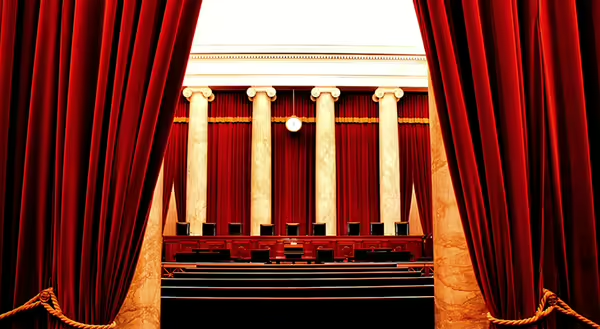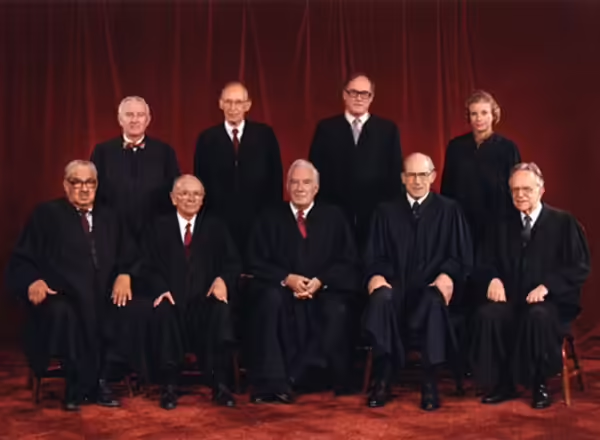
Agriculture policy is a complex area that can be difficult for many to understand. People often look at what Congress or Federal agencies do regarding agricultural production. However, we must not ignore the courts' essential role in policy-making. After all, the courts are responsible for resolving legal disputes and, in the words of Chief Justice of the U.S. Supreme Court John Marshall, “say what the law is” (Marbury v. Madison, 1 Cranch 177, 1803). On June 29, the U.S. Supreme Court issued a decision in Loper Bright Enterprises v. Raimondo and overruled the decision in Chevron v. Natural Resources Defense Council (467 U.S. 837, 1984). While this case initially started as a dispute over the regulation of fisheries, the long-term ramifications of this decision will be felt for a long time, especially for agriculture and the ability of the Federal government to issue new rules and regulations. Not everyone needs to be a Constitutional scholar to understand the importance of this decision. This two-part blog series will cover what Chevron deference is, the recent Supreme Court decision, and how it could potentially impact agriculture in the future. This post will discuss the history of Chevron deference.
To understand where we are now, we must go back to 1984. Songs like “Footloose,” “Ghostbusters,” and “Jump” were big hits on the radio. Popular movies at the time included The Terminator, Ghostbusters, and The Karate Kid. Apple released the first Macintosh computer, and Los Angeles hosted the Summer Olympics. In February, the U.S. Supreme Court heard oral arguments in the case of Chevron U.S.A., Inc. v. Natural Resources Defense Council, Inc. At the center of this case was a challenge by the Natural Resources Defense Council (NRDC) and other environmental advocacy groups against a regulation enacted by the U.S. Environmental Protection Agency (EPA) regarding stationary sources of pollution. Specifically, the groups argued that the EPA’s interpretation of a stationary source was inconsistent with the Clean Air Act and asked the Court to set aside the regulation.

In June of 1984, the Supreme Court released a unanimous ruling in favor of Chevron, with Justice John Paul Stevens writing the opinion. It is important to note that three of the nine justices (Justices Marshall, O’Connor, and Rehnquist) did not participate in the deliberations. Justice Stevens introduces a two-step test that a court must utilize when determining the validity of an agency’s interpretation of a statute. First, a court must examine the exact text of the statute and Congress’s intent for enacting the statute. If the text is clear and Congress’s intent for enacting the statute is clear, then Justice Stevens stated, “…that is the end of the matter.” However, if the text is ambiguous or Congress’s intent is unclear, the court must go to the next step of the test. The second step required that the court determine whether the agency’s interpretation of the statute is “based on a permissible construction.” In other words, the court should defer to that interpretation if the agency’s reading of the law and its powers is reasonable. According to Justice Stevens, the court should not impose its reading and understanding of the statute. Stevens based this standard on the idea of express delegation. Congress has the sole power to create laws under the Constitution. However, Congress cannot think of every situation that could occur after a law is enacted. Congress sometimes leaves “gaps” in the law that allow an agency to issue regulations and rules that can address specific situations and enforce the law. Justice Stevens recognized that courts had given significant weight to agency interpretations of statutes and that courts should not overturn an agency’s actions so long as they are within the agency’s powers under the relevant statute.
The remainder of the Supreme Court’s opinion applied this two-step test to the case before them, which resulted in the Court overturning the decision of the lower court and upholding the regulation. This seemingly harmless 30-page ruling would have a long-lasting impact on the Federal government’s ability to enact rules and regulations. In the years following, the number of cases that used Chevron’s two-step test began to increase and quickly became one of the most used and cited precedents in modern case law. Chevron has inserted itself as one of the most critical cases in modern administrative law and has created its lineage of cases that have impacted how the government enforces the law. That is, until now. Part two of this blog series will examine the recent decision in Loper Bright Enterprises v. Raimondo and how it will change the federal government’s administrative powers.
To read the Court’s opinion in Chevron, use this link: https://supreme.justia.com/cases/federal/us/467/837/#tab-opinion-1955635.
For a brief overview of Chevron, use this link: https://www.oyez.org/cases/1983/82-1005.